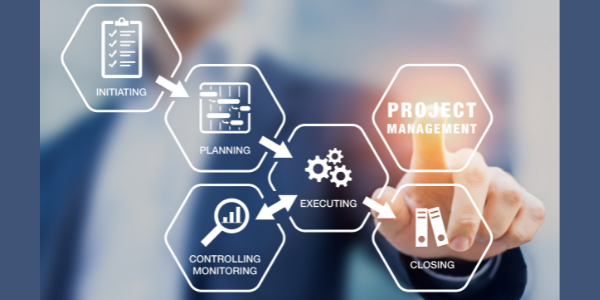Welcoming Uncertainty with Self-awareness
Everyone confronts fear. Either they maintain clear-minded focus or react with denial or panic.
Individuals, teams, and organizations perpetuate dysfunctional policies and procedures because they are afraid to open Pandora’s Box of transformative change.
“People have a hard time letting go of their suffering. Out of fear of the unknown, they prefer suffering that is familiar.” Thich Nhat Hanh
While it takes effort, ‘a hard time’, it is possible to overcome the fear of the unknown and by doing so alleviate the suffering caused by dysfunctional performance.
Fear of the unknown
The unknown, uncertainty, is at the root of worry, anxiety, and fear. Since what will happen in the future is unknowable, Project managers, executives, and all the other stakeholders face uncertainty. Sure, we can make plans and analyze trends and past performance, but no one knows the future with 100% accuracy. Uncertainty is a certainty[1].
Many attempt denial – “We have a plan and it says that the work WILL be done by the target date for the budgeted cost.” Others realize that change and uncertainty are natural and inevitable but are fearful, worrying about what might happen if the project slips and spending goes through the roof. Some will experience fear but won’t be fearful.
Advertisement
[widget id=”custom_html-68″]
Fearful Reactivity vs. Responsiveness
To be fearful (full of fear) means to be driven by fear. Courage is about using the energy of emotion to remain calm enough to think, act, and communicate clearly and effectively. It is what makes the difference between highly successful project managers and others.
To be responsive, to think clearly, and make effective decisions, requires cognitive readiness or VUCA tolerance. VUCA is volatility, uncertainty, complexity, and ambiguity. The higher your tolerance for VUCA, the more likely you will be able to handle stressful situations.
Inner Workings
VUCA tolerance requires that you confront your inner workings. These are beliefs, biases, denial, clinging to impossible goals, emotions such as anger, fear, frustration, greed, and jealousy, and their causes. Confronting these put one face to face with the unknown.
What if my beliefs are unreal?
What will happen if I confront the ‘inner workings’ that are behind my fear, my perfectionism, procrastination, anger, and whatever else gets in the way of effective behavior?
Self-awareness
Facing these natural inner dynamics is to be self-aware. Self-awareness enables self-management and self-management is the key to VUCA tolerance. Self-management is the part of emotional intelligence that allows fear or any other emotion to be fully felt and then choosing what to do be responsiveness.
Cultivate Self-awareness
How does one cultivate self-awareness? The process begins with the recognition that it is an essential ingredient – some say, the most essential – for being able to perform optimally. Self-awareness “lies at the root of strong character, giving us the ability to lead with a sense of purpose, authenticity, openness, and trust. It explains our successes and our failures.”[2]
Until you make the connection between performance and self-awareness, you are likely to be reactive, driven by emotions, beliefs, and biases. And that is true for individuals, teams, and organizations.
Self-awareness implies objectivity, looking at yourself and your performance as if you were looking at anyone else. It is taking a step back to see yourself as others see you and to see what is going on “under the hood”, internally. To be self-aware combine the following:
- Use mindfulness meditation to cultivate the ability to objectively observe whatever is happening within and around you
- Identify your goals, priorities, values, beliefs, biases, and intentions and track your performance with them as a benchmark
- Inventory your strengths, weaknesses, opportunities, and threats
- Get feedback as individuals by taking character/personality assessment tests to better understand your character[3]
- Get a team and organizational feedback using assessment tools and open dialog
- Get feedback from those you live and work with
- Create a relationship with a coach or mentor.
Teams and Organizations
Teams and organizations are subject to the same dynamics as the individuals that make them up. The “self-aware” team or organization will explore its character and environment to identify the things that get in the way of optimal performance.
Based on objective criteria there will be conscious effort to improve by eliminating what gets in the way and making maximum use of the strengths of its members to overcome weaknesses and avoid or manage risks.
But not all teams and organizations are self-aware. They do not shed the light of performance analysis on themselves for reasons such as lack of time, insufficient assessment skills, and fear of exposing their weaknesses.
Many pay lip service to objective performance assessment and continuous improvement. They may collect performance data and have reviews, but they don’t use the results. Some hide results that are too embarrassing. Some never act upon identified opportunities for improvement.
Transformation
We are living in a time of transformation. Transformational change is frame-breaking. It completely changes the way you think and work. It alters relationships and changes values and policies. With transformational change, there is no going back, and the way forward is unknowable.
Digital transformation brings technologies like artificial intelligence, process automation, robotics, and data analytics into play. Their application breaks new ground and significantly impacts people’s roles and responsibilities.
Transformation to Agile and Lean approaches from more highly structured ways to manage and perform projects change relationships, roles, and responsibilities. It changes the techniques used in planning. It changes project managers’ and other stakeholders’ skill set requirements with a greater reliance on collaboration and communication. It opens teams and the organization to greater transparency.
Moving Forward
Moving forward into the unknown is scary. Self-awareness is possible but cultivating it is not necessarily easy. It requires that you objectively assess your inner workings and the way they influence personal and group performance and use the insights you get to improve.
Related resources:
Ready For Anything – Mindfully Aware – PM Times
https://www.projecttimes.com › articles › ready-for-any.. .
Ready for Anything – Courage and Insight – PM Times
https://www.projecttimes.com › articles › ready-for-any…
Managing Project Expectations and The Courage to Push Back
The Key to Performance Improvement: Candid … – Project Times
https://www.projecttimes.com› articles › the-key-to-per…
ht.com› project-management-tips
Cognitive Readiness in Project Teams: Reducing Project …
https://books.google.com› books
Improve Performance by Mindfully Managing Stress by …
https://www.mindfullifemindfulwork.com› 2021/06/04
Self-aware Living
www.self-awareliving.com
[1] There are notable exceptions like, change and death, but we won’t get into those here.
[2] Harvard Business Review, “5 Ways to Become More Self-Aware” by Anthony K. Tjan, https://hbr.org/2015/02/5-ways-to-become-more-self-aware
[3] There are many self-assessment tests. For a sampling see Psychology Today “Self Tests” at https://www.psychologytoday.com/us/tests and “14 Free Personality Tests That’ll Help You Figure Yourself Out” https://www.themuse.com/advice/14-free-personality-tests-thatll-help-you-figure-yourself-out




